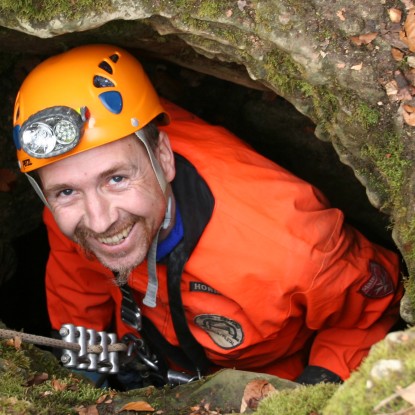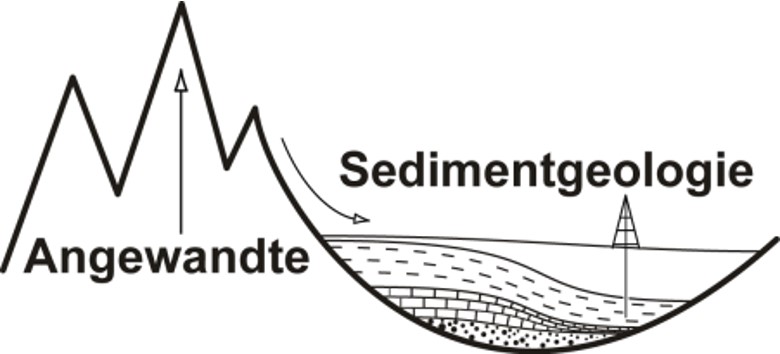Applicants: Prof. Dr. Matthias Hinderer, Dr. Jens Hornung
Funding: DFG Sino-German Cooperation Group
Persons in charge: Jianguang Zhang
Duration: 2006 – 2008
Summary
Tarim and Junggar basins in central Asia (NW-China) are long-lasting intracontinental basins whose margins were repeatedly affected by tectonic events. In Upper Carboniferous to upper Permian times both basins were separated by the formation of an ancestral Tien Shan orogen. As literature data suggest, sedimentation became entirely continental after this event showing lacustrine, deltaic and fluvial depositional patterns. So the basins depositional record should only show sedimentary patterns governed by climate change (e.g. lake level fluctuations, changes in discharge patterns, etc.) and tectonic pulses (e.g. sediment production rates, gradient, modes of subsidence, etc.). Palaeoaltitude of the orogen may play an important role by developing a climatic asymmetry of the south and north flanks of the ancestral Tien Shan range due to SE-NW directed strong monsoonal activities. Because central Asia kept its palaeolatitude since Permian time observed long term climatic shifts can also be interpreted as changes in the global circulation patterns.
Data of our field campaigns in 2001, 2004 and 2007 show that depositional patterns on both sides are similar but not identical, which point to a climatic and tectonic asymmetry: While in north Tarim basin (south flank of Tien Shan) Triassic and Jurassic strata show very thick and clear deep water turbidites and sedimentary patterns of extensive river dominated deltaic, delta plain, perennial meandering and sandy braided fluvial styles, the time-equivalent record in the south Junggar basin reveals much shallower lacustrine facies, coarser delta plain sediments and mainly gravelly straight fluvial channel styles with a predominance of crevasse splays. This may imply for the north Tien Shan flanks (south Junggar basin) a more seasonal climate under dominantly arid conditions and steeper gradients.
A four-fold depositional cyclicity is observable in all sections and age control of the Mesozoic strata has been significantly improved and revised in 2007 by the regional survey no. 1 of Xinjiang, so regional correlations in terms of stratigraphic baselevel are possible for distinct Mesozoic timeslices along both flanks of Tien Shan. Together with detailed lithofacies logging, quantitative large scaled 2-D outcrop mapping of architectural element distribution is possible to address the following tasks:
- High resolution sequence stratigraphy of adjacent foreland basins
- Timing of tectonic pulses and sediment supply
- Palaeogeography of Tian Shan in the upper Triassic and lower Jurassic. This includes identification of sediment supply centers and depositional systems (for each formation separately). Facies belts were significantly shifted laterally along the strike-slip tectonical component in the Tien Shan orogen which therefore has to be quantified
- Activities of mega monsoon system and lake level fluctuations
- Characterization of potential source and reservoir rocks
- Synchronosity, differences and similarities between events in both foreland basins. (biostratigraphy and lithostratigraphy, which includes definition of the Triassic and the Jurassic boundary)
- Environmental changes at the Triassic and Jurassic boundary
Additionally, key parameters for hydrocarbon exploitation, coal or mineral exploration were recorded at the investigated successions. So the data-set may be used also as an outcrop analogue for subsurface coal deposits or oil and gas reservoirs, because in the Junggar and Tarim Basins the lacustrine clay and siltstones act as hydrocarbon source rocks while the clastic successions of the basin margins serve as reservoirs bearing important amounts of oil and gas.
| Name | Contact | |
|---|---|---|

Picture: Matthias Hinderer
| Prof. Dr. Matthias Hinderer | hinderer@geo.tu-... +49 6151 16-20631 |

Picture: Jens Hornung
| Dr. Jens Hornung | hornung@geo.tu-... +49 6151 16-20632 |




















